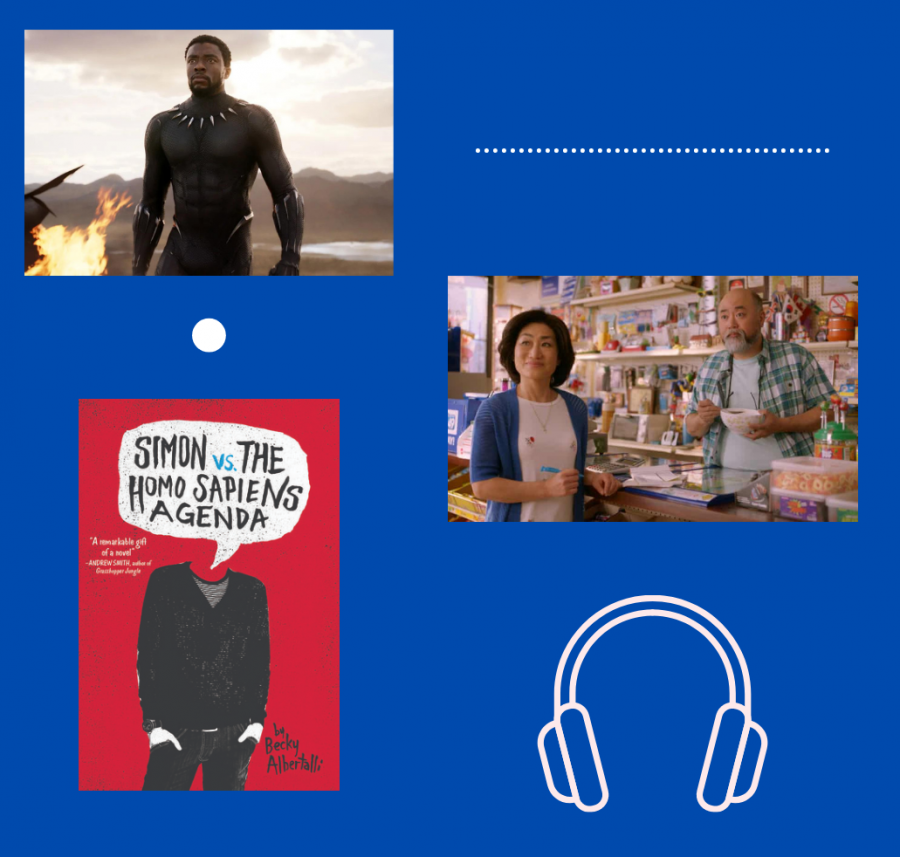The Impact of Representation in Media
‘Black Panther’, ‘Kim’s Convenience’, and ‘Simon vs. The Homo Sapiens Agenda’ are just a few examples of good representation in media. As a society it is important for us to think critically about the people we see portrayed, and be careful about the generalizations we make. The duty of being conscious about representation also falls to the creators though, and they need to be held accountable for mistakes.
May 10, 2021
Dan Povenmire is probably most well known for the Disney show Phineas and Ferb, and his voicing of the main villain Dr. Doofenshmirtz. Recently he has also made a name for himself on TikTok by responding to questions in the voice of the recognizable villain. However, Mr. Povenmire also recently released one video addressing people’s criticisms of one of the characters, Baljeet. In the show, Baljeet is a math-loving nerd with an accent, frequently picked on by a bully. Many use his name as an insult for Indian people, generalizing them and reducing them to stereotypes by calling them “Baljeet”. Though the creator condemns this negative usage, the fact remains that Baljeet is one of the few representations of South Asian people in media, and that he is essentially a walking stereotype doing nothing to help the people in this community.
This bad representation occurs for other members of marginalized communities too. From Mr. Yunioshi in Breakfast at Tiffany’s being a perverted caricature of a Japanese man, to Kurt Hummel in Glee being vaguely predatory towards a straight man, these people are reduced to stereotypes to further the plot, with no character development whatsoever. The people who consume media similar to these associate real human beings with these negative character traits, especially if these portrayals are constant and unchanging.
It’s understandable that sometimes someone from a marginalized group has to play the villain because they are allowed to be evil and flawed as well. It’s also understandable that sometimes they have to be the comic relief or a side character with stereotypes to add depth or lightheartedness.
The negative impact of stereotypical or bad representation in media can also hurt the people being represented. I can speak from my own experience as an Indian person, seeing Ravi from the show Jessie constantly speaking in an exaggerated accent and bringing up stereotypically Indian things like tigers and samosas. When I was younger, I was simply happy to have someone who looked like me on the screen, despite the fact that he was the butt of many jokes and mostly unrelatable. I didn’t realize how much it hurt until I grew older. He is just one of the many ignorant portrayals of people of color (POC), enabling viewers who maybe don’t have much experience with people different than them to stereotype in real life.
Issues with representation lie not only with how characters are portrayed, but also the problems they face. The ‘bury your gays’ trope has come under fire because of the media industry constantly killing off LGBTQ+ characters for the sake of drama. While media addressing heavy topics like racism is definitely necessary, it can also be exhausting for POC to constantly see themselves only in these spaces. This is not to say these things should be permanently banned or ignored, but a change of pace would be refreshing and help minorities feel more included and seen.
However, efforts are being made to create more diverse versions of less represented communities. An example of this is Black Panther, where the plot was centered around Black people instead of white, and showed various well-developed characters with unique personalities. Another is Kim’s Convenience, a niche sitcom focused on a Korean family. While important parts of their culture are integrated into the show, the characters deal with issues other than racism and break stereotypes. Ultimately, a common theme in these better pieces of representation is that they had POC involved somewhere in the production process. It makes sense that these people would be able to better understand and write things they themselves had experienced. Despite this, even the behind the scenes for films, books, and movies are white cisgender male dominated spaces. Therefore, most of the media we see is through their lens, and having authors or musicians who aren’t a majority provides a fresh and more relatable perspectives for different parts of the audience.
Ultimately we have to remember that no representation will be perfect. People have all sorts of different experiences, and no one movie, TV show, song, or anything will perfectly encapsulate every single one of them. What does matter though is getting as many of these different stories told as possible. To help people stop putting them into boxes, but also for the people seeing themselves to finally feel acknowledged.



